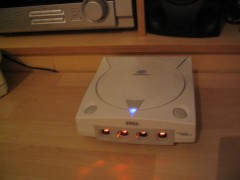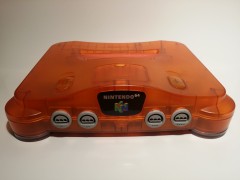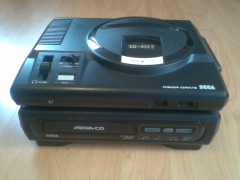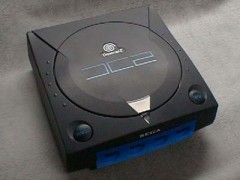Sie sind nicht angemeldet.

|
Disco_Stu: Gamecube Controller Prototyp
Prototyp des Nintendo Gamecube C...

|
Disco_Stu: Sega Saturn - Designprototyp B

|
Disco_Stu: Diverses
gefunden via google

|
Disco_Stu: Mein erster Dreamcast Mod

|
Even: Xbox one
weiß orange mit XBMC hack

|
Even: N-Gage
Analogstick Mod

|
Disco_Stu: Nintendo 64
genauere Beschreibung folgt

|
Disco_Stu: Xbox Prototyp

|
Disco_Stu: Mega Drive I + Mega CD I

|
Disco_Stu: Diverses
|
|
Sie sind seit sechs Monaten Mitglied. 32bitrpg (Heute, 00:07) |
Lieber Besucher, herzlich willkommen bei: Pmod.de. Falls dies Ihr erster Besuch auf dieser Seite ist, lesen Sie sich bitte die Hilfe durch. Dort wird Ihnen die Bedienung dieser Seite näher erläutert. Darüber hinaus sollten Sie sich registrieren, um alle Funktionen dieser Seite nutzen zu können. Benutzen Sie das Registrierungsformular, um sich zu registrieren oder informieren Sie sich ausführlich über den Registrierungsvorgang. Falls Sie sich bereits zu einem früheren Zeitpunkt registriert haben, können Sie sich hier anmelden.
Dieser Beitrag wurde bereits 2 mal editiert, zuletzt von »mew« (28. August 2014, 03:22)

 das Foto beweist es
das Foto beweist es
die Zipdiskette mit N64 Logo halte ich eher für ein Scherzfoto
Könnte ich mir auch vorstellen. Alternativ wäre es natürlich auch denkbar dass zu Präsentationszwecken zunächst ein Mockup gefertigt wurde, bei dem noch ZIP-Technik zum Einsatz kam, da die eigentliche Disk noch nicht so weit war. Im Mai 1994 wurde das erste Mal über eine mögliche "CD-Erweiterung" für das Ultra 64 berightet. Wenn man danach geht, könnte das Mockup es wirklich noch im 94er Zeitraum entstanden sein, obwohl die verwendeten Logos eher auf 1995 deuten. Laut Patent steht das Design der Disks spätestens seit Mitte 1996 belegbar fest. Im Patent werden aber auch schon Ansichten des eigentlichen Laufwerks dargestellt, daher ist davon auszugehen dass zu dem Zeitpunkt das DD prinzipiell schon fertig war. Wir haben also anhand der bisherigen Daten einen Zeitraum von Mitte 94 bis Ende 95 zur Auswahl.da die 64DD Disk ja Zip Disketten in einer eigenen Hülle sind wurde für den prototypen aus kostengünde zum testen auf normalen Zip Disketten gesetzt
Falls noch nicht bekannt: 64DD.net wird in naher Zukunft wohl eingestellt werden und offline gehen. Diese Info wurde von einem der Moderatoren eher versehentlich geleaked, genauere Infos sind jedoch noch nicht bekannt.Ich denke mal von der Seite 64dd.net kann man viel Informationen herholen.
Um nochmal darauf zurückzukommen: Die Ähnlichkeit der 64DD Disks und der des geplanten SNES CD-Addons ist wirklich recht überzeugend. Der einzige wirkliche unterschied ist, dass beim 64DD magnetische statt optischen Disks verwendet wurden und daher kein separater Chip für Savegames in der Disk vorhanden ist. Dass die 64DD Disk zum Release eine Cartridge-Form bekommen wird, könnte also schon sehr früh festgestanden haben.Nintendo und Hitachi Maxell halten seit dem FDS gemeinsam Patente über "Disk Cartridges", auch in den Jahren 1991, 1992 und 1993. Zu dieser Zeit befand sich das SNES CD-Addon in Entwicklung. Spätestens 1996 kam dann wohl ALPS mit dazu, daher kann man davon ausgehen, dass es sich bei den 64DD Disks um Weiterentwicklungen der SNES-CD Disks handelt!


Project Reality!
I work in the Project Reality group, which is designing the next generation of home video game (the Nintendo 64) in partnership with Nintendo.
Of course I can't say too much about that, but you can imagine what SGI brings to such a collaboration. That's the part I'm working on.
Official Silicon Graphics Press releases about Project Reality and related products can be found on the main SGI and MIPS WEB pages (you'll have to dig a little to find them).
The Making Of Project Reality
[Note: I wrote this in 1996 while working on Project Reality--the Nintendo/SGI joint venture that became the Nintendo 64. It has appeared several places on the web, including the MIPS site, but does not appear to be live anywhere, hence the repost here. - Steve]
August 23, 1993. The consumer electronics industry tuned in as SGI and Nintendo announced a partnership to build the world’s most powerful game machine. Speaking to a crowd of analysts, news media, and industry pundits, Jim Clark outlined an ambitious project, Project Reality, that would revolutionize the consumer electronics industry. Never one for understatement, Clark declared that Project Reality would harness the “combined computer power of hundreds of PCs” for under $250. The pundits were convinced that the SGI/Nintendo powerhouse could deliver it. So, apparently, were the analysts–3DO stock dropped $4 that day in heavy trading–and children around the world, whipped to a frenzy by the glowing reports in the news media, began to lobby their parents for their Christmas 95 presents. By all indications, Project Reality would be a tremendous success. Only one small task remained–build it. Ready. Set…
Go!
The plan called for SGI to design two chips that would be at the heart of the system: the R4300i and the Reality Coprocessor (RCP). The R4300i, the low cost, low power MIPS RISC CPU, would handle the interaction with the game player and manage the game’s control tasks. The RCP, the media processing engine, would handle all the high performance graphics and music synthesis tasks. The R4300i team was already in place in MIPS and staffed with experienced engineers. However, the Project Reality team, which would design the RCP and write the software, had to be built from scratch.
“Only hire superstars” was Wei’s mandate [Wei Yen was the SGI executive in charge of the project - ed.]. Staffing was going slower than expected and this was a tall order. Surprisingly, internal recruiting was difficult. Many people inside SGI were suspicious of the hype surrounding the project. “Onyx caliber graphics and music synthesis in a $250 box? You’re crazy,” came the protests. “Maybe so, but that is what we’re going to do,” was the team’s response. Most of the early Project Reality team, with the exception of a few burnt out old-timers, came from outside SGI.
With few people on board, Project Reality team members wore many hats in the fall and winter of 93. Logic designers became system administrators, software folks wrote verilog, and Gudrun, ostensibly the Admin, wrote microcode. But one by one, lured by the prospect of designing a system that would ship millions of units per year (Nintendo has reportedly sold 100
million units to date), top hardware and software designers signed on. As winter turned to spring, the team reached critical mass, and it all began to come together. The product plan crystallized and the first milestone became clear: RCP Tapeout 1.0.
The Road to First Tape Out
RCP Tape Out 1.0 was to be no normal tape out. Not only was the 2.4 million transistor RCP design to be completed, but the audio and graphics microcode was to be written, simulated, and tested against the verilog. In other words, virtually the entire system was to be developed to make sure that the chip would perform as required.
The summer of ‘94 saw some significant successes as late nights and hard work began to pay off. The first point sampled smooth shaded polygon was generated by the RCP C simulator. The audio sample rate conversion microcode was completed. The chip design was well under way. Things appeared to be going smoothly. Whether the product of inspired vision or the habenero burger runs, the team had the “fire in the belly.”
That summer also saw the first release of the Project Reality emulation environment. Since the real system would not be available until the spring of 95, the team designed an emulator that ran on an Onyx with a Reality Engine that enabled Nintendo and key developers like Rare and DMA to start work on their games.
It wasn’t until October 94, with tape out deadlines approaching, that the misgivings that the RCP designers had been mostly keeping to themselves boiled to the surface; the chip was too big! In order to meet the cost targets, the RCP had to be smaller than a specific size, and though the designers were pushing the design tools to the limit, it appeared that the RCP was going to miss its target area by a long shot.
On October 10th, a critical meeting was called to discuss the options. Cut the vector unit in half? That would devastate performance. Cut the cache memory? That would cripple the graphics microcode that was already using every bit of instruction memory available. Pray that the designers would somehow be able to trick the tools into doing what even the tool vendors believed they could not do? With the first test tapeout scheduled for a little over a month away, changes to the chip design would be impossible to implement, let alone test, in time. The third option was the only viable one; go for it and trust the designers to find a way.
While the RCP chip designers were busy reducing the area and completing the top level floor plan, the software team was hard at work on the thankless task of verifying the chip (not typically a software chore) to make sure that there would be no flaws. The RCP would, after all, ship in tens of millions of systems.
By the end of 1994, time was running short. In order to ship systems for Christmas 95, both the RCP and the R4300i needed to be taped out very soon. Fortunately, the R4300i team was on schedule and completed their tapeout in early December. The RCP team was not so lucky. With the holidays approaching, the RCP team was working almost non-stop to finish the chip design so that NEC could start manufacturing the prototypes which would be built into development systems. People with plans for time off over the Christmas week canceled them. A couple of the key tape out team members came in on Christmas day. Everyone realized that the stakes were high.
By the end of January ‘95, the team was exhausted. Working nights and weekends away from family and friends was beginning to take its toll. The tapeout tension mounted with each passing day. Finally, on February 24, 1995, the tape out was complete. And that meant…
PARTY!
And what a party! After the toast and the obligatory management speech, two engineers summarily christened the director with the tub of ice water, starting what might well go down as the wettest indoor celebration in SGI history. By some fortunate coincidence, one of the nearby conference rooms contained a bunch of balloons, which were quickly pressed into service for the mother of all water balloon fights. After thoroughly soaking team members and not a few innocent bystanders, the team decided to share its celebration with others. Packing tubs of water balloons, the team stormed building 10, where in a blaze of glory, it ambushed an unsuspecting Wei Yen.
Bringup
With the chip design on its way to the fab, many of the chip designers finally took some time off. Meanwhile, the software team was busy preparing for the system bring up. With functional silicon from the R4300i team in hand, the OS software engineers got part of the kernel up and running. All was set to go for the arrival of the RCP chips.
The RCP chips were scheduled to be back in the third week of April and Nintendo wanted to show demo systems three weeks later at the E3 show. It was going to be tight. Tight, but not impossible. In fact, it went like clockwork:
◾Tuesday, April 18th: The untested RCP chips arrived in San Francisco airport from NEC. That evening, it was up and running–and passing–some preliminary system tests.
◾Wednesday, April 19th: RDRAM access was achieved and the frame buffer was displayed on the TV.
◾Thursday, April 20th: The first triangle was processed through the RCP Display Processor.
◾Friday, April 21st: The RCP Signal Processor passed its tests.
◾Saturday, April 22nd: The first animated, bouncing triangle applet was run on the system.
◾Sunday, April 23rd: The first full application was up and running less than a week after the first silicon landed in the United States.
Over the next two weeks, Project Reality staff worked nearly around the clock with engineers from Paradigm Simulation to polish Paradigm’s Cobra game which Nintendo demonstrated to key developers and distributors in a whisper suite at the E3 show on May 10.
Just prior to the show, however, Nintendo dropped a bombshell–it would delay the release of the console, renamed the Nintendo 64, until April 96. According to the press release, Nintendo wanted to give developers more time to develop their games. Regardless, the team pushed on: With the first software release on the real hardware scheduled for early June, and the second tape out scheduled for mid July, there was no time to lose.
Out of the Lab
Almost before the E3 dust had settled, development systems were whisked out of the lab and into the hands of the waiting developers. Thanks to the Reality Engine emulator, many of the games were already well into production, but there is nothing like running games on the actual hardware to tune the sounds, images, and game play. With development systems in hand, developers could begin this process.
Meanwhile, the chip team was fighting the area battle. In the summer of 95, the R4300i team formally joined the Project Reality team with the goal of helping to shrink the RCP to a size which better matched Nintendo’s cost targets. Armed with full custom design techniques and a bag of tricks to force the physical design tools into submission, this group worked hand in hand with the original RCP design crew to shrink the chip down to size without compromising any functionality. With a little custom design here, lots of design optimization and tool wizardry there, the team was able to reach the die size target. The clock frequency was increased to the maximum possible for the system board as well!
Version 2.0 of the chip taped out on July 23rd, 1995, and, following the earlier precedent, a water fight of gigantic proportions erupted–this time with Super Soakers. After thoroughly soaking anything that moved in building 8, the team went in search of Wei in building 6. Not finding him in (he was suspiciously away on business), they continued up the management chain and set up an ambush for TJ [SGI's President - ed.] in his office.
When RCP 2.0 came back from the fab on August 6 and sailed through testing, it was all systems go.
Making it Real
The fall of 95 saw the Nintendo 64 mature from prototype to real system as the software team optimized, added features, fixed bugs, and brought new game developers up to speed. The fall of 95 also saw it begin to take on a life outside SGI.
The marketing machine awakened as Nintendo prepared for a November public introduction in Japan at it’s Shoshinkai show. While the Nintendo 64 was not to ship until April, Shoshinkai was an important show for Nintendo. The key distributors would be making their buying decisions based on what they heard and saw there.
While the world got a taste of the power of the Nintendo 64, the SGI team got a taste of what it means to ship a consumer product. In November and December of 95, the team attended to the million and one details that needed to be addressed for mass production: chip test vectors, production line tests, process yield correlation, regression tests. Not very glamorous work,
by any means, but crucial work.
On February 1, 1996, Nintendo announced the second and final delay. Citing parts shortages as the primary reason, Nintendo declared that the system would officially ship on June 23 in Japan and on September 30 in North America. But it would be unveiled at the E3 show in May at the Los Angeles Convention Center.
In the following two months, the SGI team worked out the final mass production details while the developers put the finishing touches on their games and submitted them to Nintendo for stress testing. Finally, by the first part of May, everything was set for the show.
E3: Wow!
E3 was all it was hoped to be and more. The official unveiling occurred at a press conference on Wednesday, May 15. “Its over, its sooooo over,” drooled one member of the press corp watching the live demonstration of real games on the large screen monitor. The folks at GamerX were even more ebullient:
“Today’s a beautiful day, mostly because I just left a splashy Nintendo media briefing, where two Nintendo of America upper-ups rolled out their 64-bit wonder, Nintendo-64. I gotta admit–this baby smokes. With Silicon Graphics hardware, no CD-ROM slow-down (the N-64, as it’s been nicknamed, will use cartridges, not CD-ROMs), and several games that look to be top-shelf quality, Sony and Sega had better watch their backs. I can’t wait to get some hands-on experience with games like Super Mario 64, which looks absolutely incredible. And, judging by the reaction of the assembled crowd, neither can anyone else.”
“Render me speechless…Kudos to SGI and its sweet console implementation for Nintendo. Super Mario 64 on the Nintendo-64 is a joy to behold, and besides creating a platform that makes the PC look like an Atari, SGI brought new life to the MIPS processor under the hood. Shows how location can make all the difference. Suddenly MIPS is mainstream and hot–and we’re not talking heat dissipation problems, either.”
Even the mainstream Time Magazine joined the party. In a two page article on the Nintendo 64 in the May 20 edition, Time’s Michael Krantz says
“What matters is that the Silicon Graphics chip-fueled Nintendo 64 puts the fastest, smoothest game action yet attainable via joystick at the service of equally virtuoso motion.”
The convention goers were no less enthusiastic. Everywhere you turned on the convention floor, people gushed about the quality and speed of the Nintendo 64. The wait at the dozens of Nintendo 64 consoles was up to half an hour as frenzied gamers lined up to try for themselves the new titles such as Super Mario 64, WaveRace 64, PilotWings 64, Star Wars: Shadows of the Empire, Cruis’n USA, Mortal Kombat and Killer Instinct.
And how did the team feel? For most of the team members, the E3 show was a sum: the emotional total of almost three years of hard work, of friendships, of teamwork and personal growth. And though no-one spoke of it, each probably felt–as they were standing before the finished product that would convey the sum of their ideas to the world–the private feeling of pride that, were it to be given words, would have said “This is what I can do.”
Zitat
Ultra 64 Motherboard Shown
Siggraph '95 had more than its normal share of oooh's and aaah's this year with a surprise, partial appearance of Nintendo's prototype Ultra 64 motherboard via, oddly enough, a display photo at NECs booth. NEC was apparently using the photo (who's size was about 6 x 6 inches) as a display of the "RAMBus" memory chips which they are supplying to Nintendo for the game console. We have a GIF file of this photo available here for everyone to examine (thanks to Mark Granger for suppling us with this photo he shot at the show).
Zitat
It's All In The Games
Q & A With Nintendo's Howard Lincoln
BY MARILYN A. GILLEN
------------------------------------------------
...
BILLBOARD: Nintendo has decided to stay with cartridge for its next-generation machine, "Project Reality." What about that cartridge vs. CD question?
HOWARD LINCOLN: Right now, cartridges offer faster access time and more speed of movement and characters than CDs. So, we'll introduce our new hardware with cartridges. But eventually these problems with CDs will be overcome. When that happens, you'll see Nintendo using CD as the software storage medium for our 64-bit system.
...
------------------------------------------------
BILLBOARD JUNE 25, 1994
